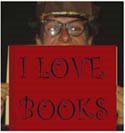 Fusco, Kimberly Newton. 2004 . Tending to Grace. New York : Knopf. 0375828621
Fusco, Kimberly Newton. 2004 . Tending to Grace. New York : Knopf. 0375828621
Plot Summary
Cornelia is a withdrawn, well-read teenager, abandoned by her mother at her unknown aunt’s house. Over the course of the summer, Cornelia learns how to cope with the quirky Aunt Agatha, finding her strengths and her steady voice.
Critical Analysis
The author creates an unlikely relationship between Cornelia and Agatha, which is the core of the book. Cornelia’s character is a complex, interesting young girl. She has learned how to adapt to a life without a father, and with an absent-minded mother, who leaves her at the first mention of moving away with her new boyfriend. The mother although sympathetic to Cornelia’s shyness and stuttering, does little to love and support her in her struggles during the teen years. Because of her inability to express herself confidently, Cornelia has isolated herself from the world.
Aunt Agatha is an older distant relative who has lived an isolated life. She has very eccentric ways that lend itself to being supportive of Cornelia’s uniqueness. The beginning of their relationship survives because they cohabitate, and Cornelia focuses her initial attention on cleaning. The situation was supposed to be temporary until the mother got her new life on track. Cornelia’s longing for familiarity, her mother, and being anywhere other than where she is, gives her escapist tendencies. Her stuttering is so severe that she avoids even getting a library card because she will have to say her name to the librarian whom she refers to as Warm Milk. Through gentle acceptance of each other, Agatha and Cornelia become close. Cornelia teaches her neighbor friend and aunt how to read, giving her more confidence in speaking aloud and with the love and support of her aunt, she eventually returns to high school with dreams of attending college someday. Upon returning to school, she is placed in a special education class because of her stuttering. Most likely, a classic method in public schools especially. Through her own adamancy, she finds an English teacher to recognize her reading level and intelligence and is given a chance in the honors class, which she feels is more interesting.
The story is simple, calm, and vivid with descriptions of Agatha’s house, garden and life as seen through Cornelia’s observant vantage. The author creates a short novel that any teen with low self-esteem, for whatever reason, can relate. Unfortunately, it tells a story that is not easy to mirror. Although it is not uncommon that teenagers are abandoned or ignored by their parents and guardians, it is not often that one is left to fend for themselves in such a positive and loving situation. There is value in the ways that the author shows how Cornelia’s confidence increases as she makes a friend, feels useful helping her aunt, and is given space to be herself without apologizing. It is good in the way that it helps show how Cornelia wants to be invisible when around other people, a common survival tactic used by self-conscious teenagers. However, she is a caring, intelligent person when not pressured by the world’s conversations.
I know very little about stuttering and so cannot speak directly with the way that the author addresses it. It is clearly an integral component to the character of Cornelia. She seems to improve in asserting herself as she practices speaking to her aunt and friend who neither judge nor pressure her to be articulate. As a child with speech problems, I can remember developing vivid conversations in my head as a coping mechanism, as Cornelia does. Her aunt builds her a teepee in the backyard that becomes her safe space and cocoon. She develops her writing skills even more and begins her life story. All of these things are great suggestions for a family looking to help a child with speech problems, however it certainly depends upon the cause of the stuttering and the author never addresses this fact. This gives the impression that one can overcome the problem with care, compassion, patience and support. Although, I am sure that many with stuttering or other speech impediments cannot be so easily solved and would leave a child feeling ashamed if they could not overcome them with the help of such things as she did. The focus of the story lends itself more to developing confidence in oneself and ones strengths rather than feeling ashamed of ones weaknesses. In this light, it was a beautiful book. The literary quality was good. The story flowed, had conflicts and resolutions, richness and simplicity, and kept my attention.
Review Excerpts
"Like Katherine Paterson's classic The Great Gilly Hopkins (1978) and many other stories of the rejected kid who finds a family with a rough solitary older adult, this quiet, beautiful first novel makes the search for home a searing drama. " Booklist http://www.amazon.com/gp/product/product-description/0553494236/sr=1-1/qid=1185909815/ref=dp_proddesc_0/105-9522721-4213214?ie=UTF8&n=283155&s=books&qid=1185909815&sr=1-1
Connections















